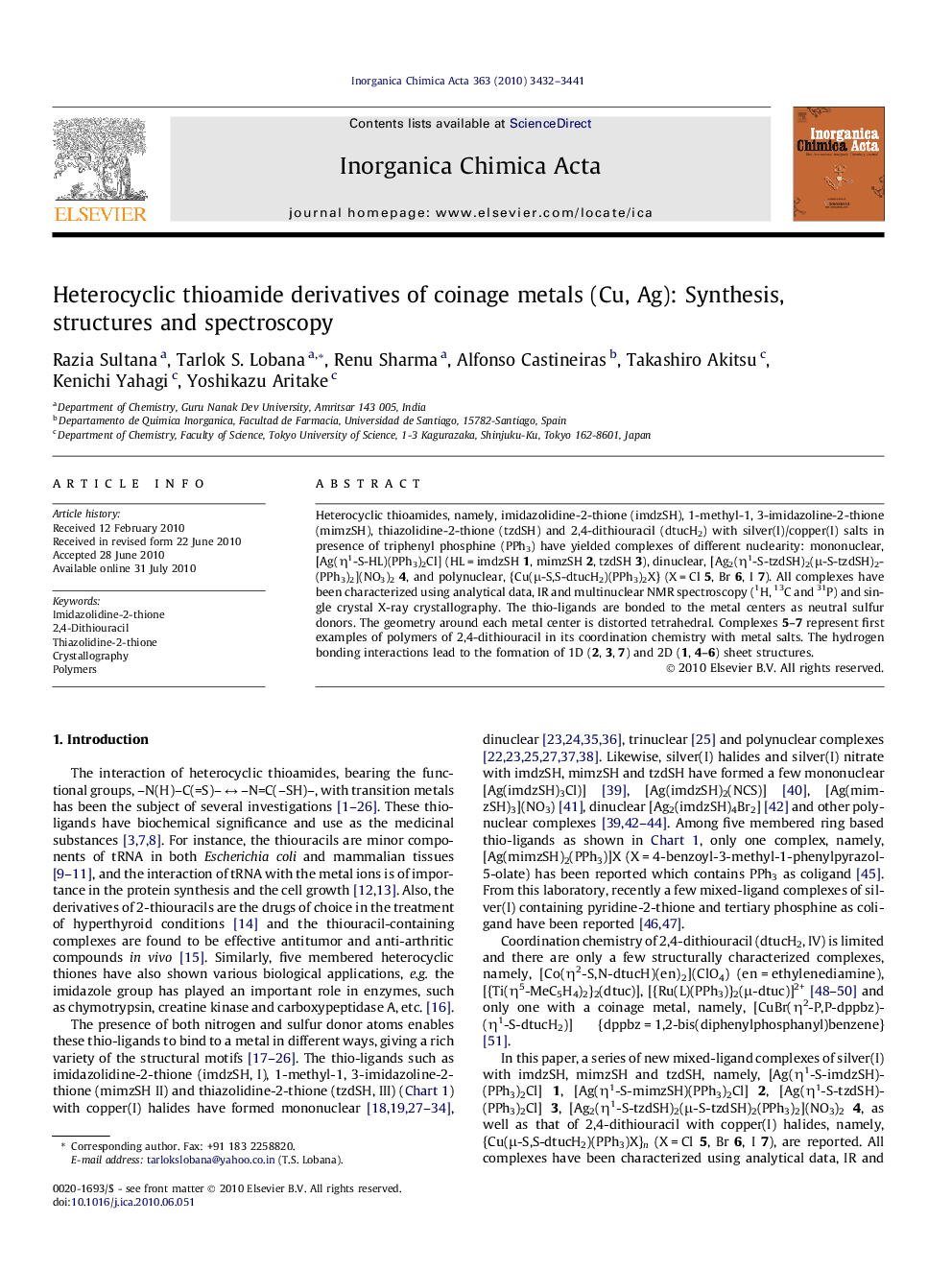| Article ID | Journal | Published Year | Pages | File Type |
|---|---|---|---|---|
| 1311191 | Inorganica Chimica Acta | 2010 | 10 Pages |
Heterocyclic thioamides, namely, imidazolidine-2-thione (imdzSH), 1-methyl-1, 3-imidazoline-2-thione (mimzSH), thiazolidine-2-thione (tzdSH) and 2,4-dithiouracil (dtucH2) with silver(I)/copper(I) salts in presence of triphenyl phosphine (PPh3) have yielded complexes of different nuclearity: mononuclear, [Ag(η1-S-HL)(PPh3)2Cl] (HL = imdzSH 1, mimzSH 2, tzdSH 3), dinuclear, [Ag2(η1-S-tzdSH)2(μ-S-tzdSH)2(PPh3)2](NO3)24, and polynuclear, {Cu(μ-S,S-dtucH2)(PPh3)2X} (X = Cl 5, Br 6, I 7). All complexes have been characterized using analytical data, IR and multinuclear NMR spectroscopy (1H, 13C and 31P) and single crystal X-ray crystallography. The thio-ligands are bonded to the metal centers as neutral sulfur donors. The geometry around each metal center is distorted tetrahedral. Complexes 5–7 represent first examples of polymers of 2,4-dithiouracil in its coordination chemistry with metal salts. The hydrogen bonding interactions lead to the formation of 1D (2, 3, 7) and 2D (1, 4–6) sheet structures.
Graphical abstractThe nuclearity of coinage metal (Cu, Ag) complexes varied with the nature of a thio-ligand and nature of the anion, resulting in the formation of mono-, di-, and poly-nuclear complexes. For example, thiazolidine-2-thione with silver(I) salts have formed two types of complexes (3, 4).Figure optionsDownload full-size imageDownload as PowerPoint slide
